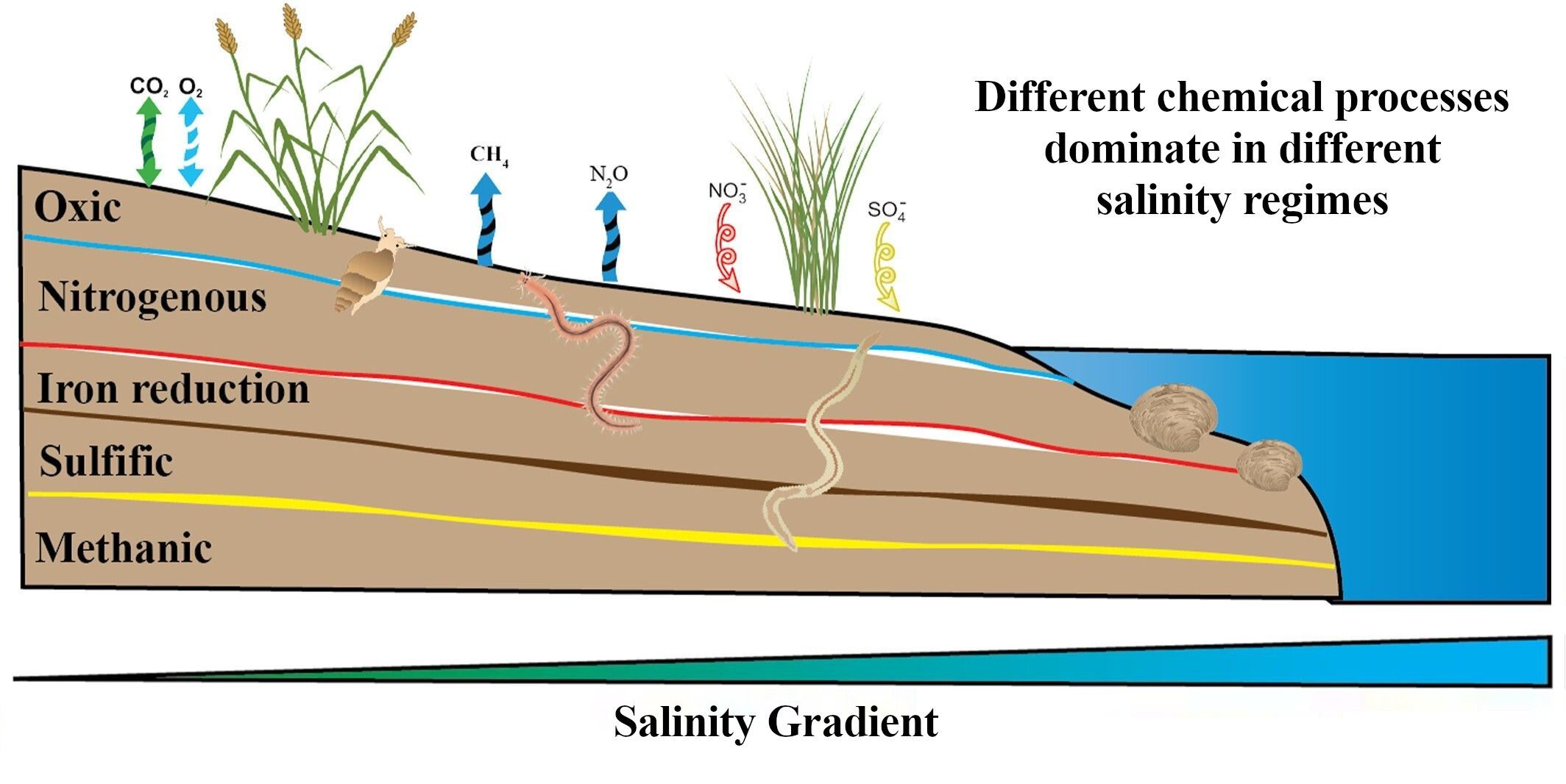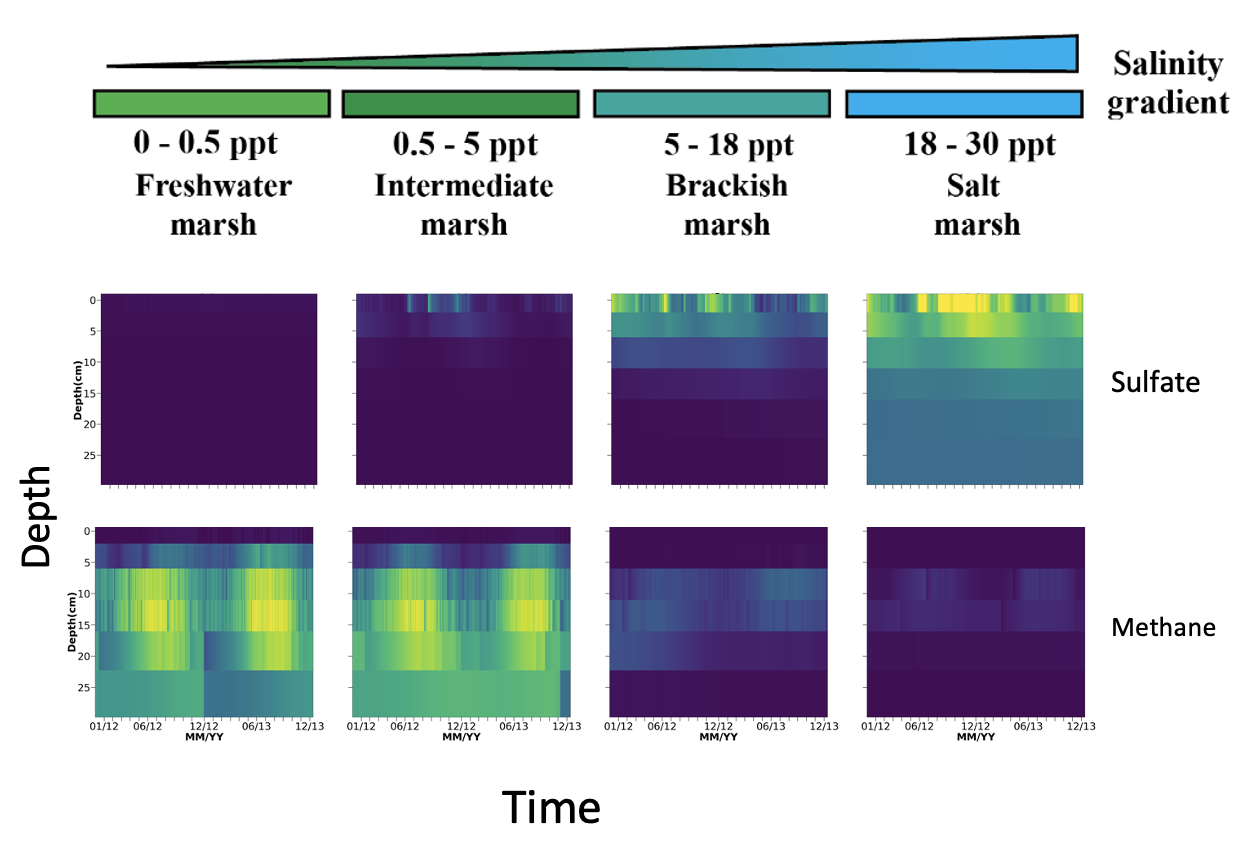Simulating Coastal Wetland Chemistry to Improve Methane Modeling

Figure 1. Major redox zones and salinity gradient considered in this study. Specific redox pathways, reaction rates and parameters for each chemical species used by the model are listed in Tables 1 and 2 in the paper (Wang, 2023). The salinity gradient spans from salt marsh, brackish marsh to intermediate marsh and freshwater marsh.
New model incorporating chemical influences of saltwater on methane production, consumption, and transport to the atmosphere improves methane modeling.
The Science
Coastal wetlands store large amounts of carbon in their sediments, but can also release methane, a potent greenhouse gas, as organic matter decomposes. This study used a new model that incorporated interactions between methane cycling and carbon, sulfur, and nitrogen cycles to predict methane fluxes from wetlands covering a range of salinity levels in the Mississippi Delta (see Fig. 1).
The Impact
Current land models omit coastal processes, particularly the influence of saltwater, in their simulations of organic matter decomposition and methane production from wetlands. As a result, they may overestimate methane production from saline coastal wetlands. The new model developed for this study allows more accurate simulations of methane production across complex coastal landscapes.
Summary
Coastal wetlands can accumulate large amounts of carbon, commonly referred to as “blue carbon,” due to high vegetation productivity and waterlogged sediments. Organic matter under saturated conditions can also be decomposed into methane, which is a potent greenhouse gas. Surface methane emissions are sensitive to multiple factors that influence subsurface methane production, consumption, and transport from the subsurface to the surface. This study presents a new model that simulates key subsurface chemical reactions, including nitrification, denitrification, sulfate reduction, methane production, and methane consumption. The model was applied to a gradient of wetland sites in the Mississippi Delta representing a range of water levels and salinities (Fig. 1). The model shows that surface methane fluxes decrease from freshwater marsh to salt marsh sites due to a combination of lower methane production and higher subsurface methane consumption in wetlands with stronger saltwater influences (Fig. 2). The model also suggests that rates of methane emission over short time scales depend on episodic gas bubbling events, which are sensitive to subsurface chemical interactions and drive high temporal variability in surface flux rates. The new model provides a framework for more mechanistic predictive modeling of coastal wetland biogeochemistry and methane fluxes across gradients of salinity.
Publication
- Jiaze Wang, T. O’Meara, S. LaFond-Hudson, S. He, K. Maiti, E. J. Ward, and B. N. Sulman. “Subsurface redox interactions regulate ebullitive methane flux in heterogeneous Mississippi River deltaic wetland.” Journal of Advances in Modeling Earth Systems, 2023. doi:10.1029/2023MS003762
Funding
- This work was supported by the Earth System Model Development program area of the Department of Energy, Office of Science, Biological and Environmental Research program.
Contact
- Benjamin Sulman, Oak Ridge National Laboratory
This article is a part of the E3SM “Floating Points” Newsletter, to read the full Newsletter check:



